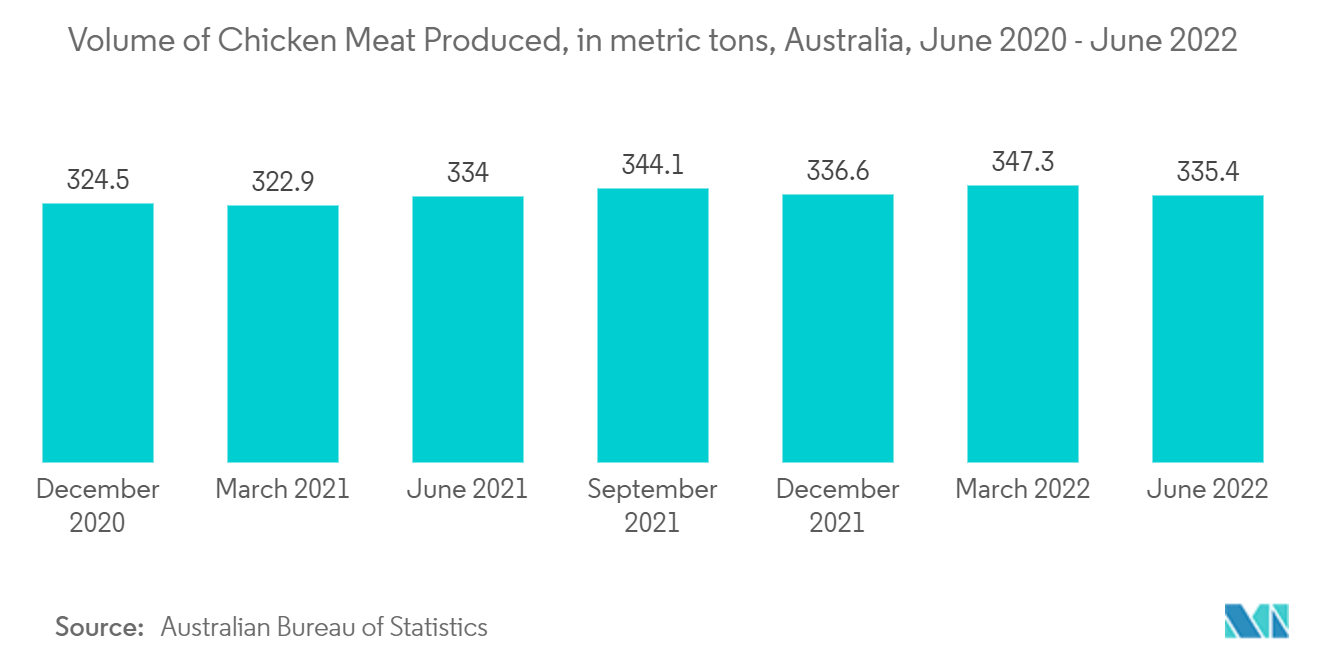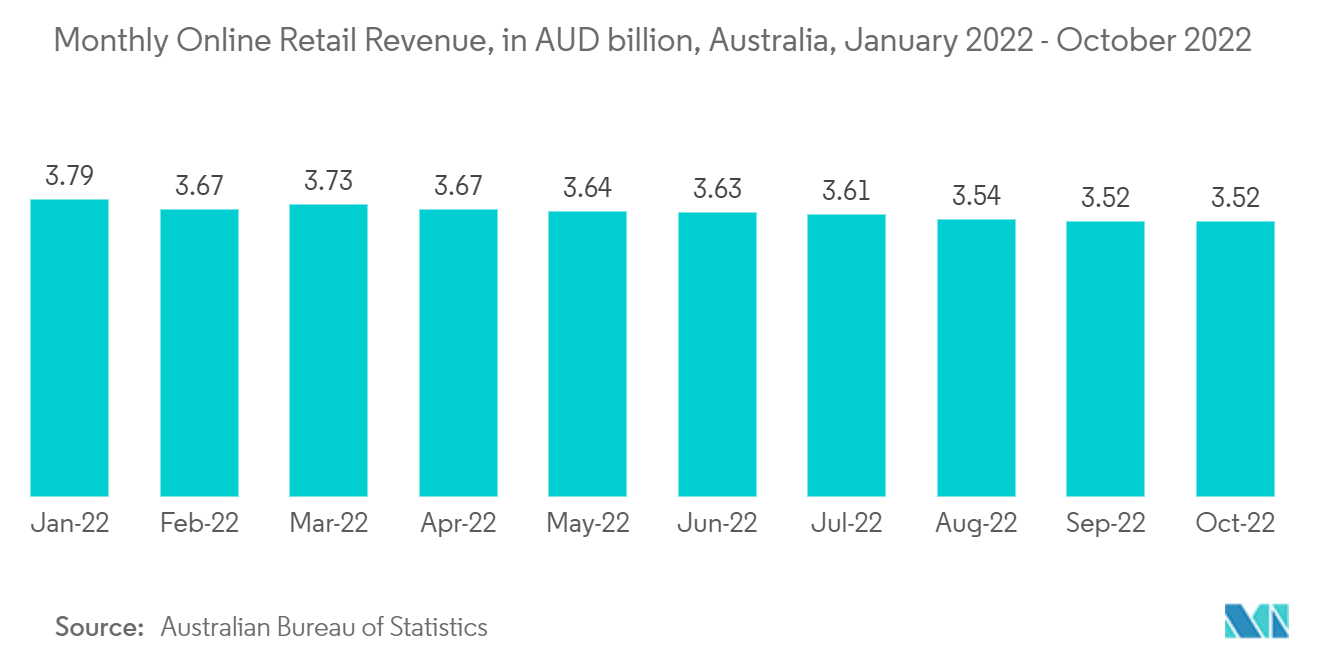Market Trends of Australia Cold Chain Logistics Industry
This section covers the major market trends shaping the Australia Cold Chain Logistics Market according to our research experts:
Huge Demand for Meat Propelling Demand for Cold Chain Logistics in Australia
Meat and Livestock Australia (MLA) reduced its 2022 cattle slaughter predictions from 6.70 million to 6.15 million head for the year. This follows a lower-than-expected kill in the first quarter of 2022, which was 6.3% lower than in the same period in the previous year. The key drivers of reduced slaughter capacity are ongoing issues with the pandemic, labor availability, and forced shutdowns due to public holidays and weather. On top of that, producers are withholding more stock from slaughter to rebuild herd sizes. Despite lower slaughter numbers, production in the first quarter of 2022 fell by only 2.5% year on year. Because of record numbers of cattle in feedlot systems and higher prices incentivizing higher weights, average carcass weights were 10.8kg heavier in Q1 2022 compared to 2021. Total beef production for the year is expected to reach 1.97 million tonnes, a 4.5% increase over 2021. Australia exported 437,000 tonnes of fresh and frozen beef in the first six months of 2022, a 5.0% decrease from the same period last year. The first quarter of the year was the most affected, with February and March falling 12.8% and 15.0% behind 2021 volumes, respectively. Volumes increased in June, with exports increasing 16.3% year on year.
Lower supply and logistical challenges have been the primary constraints on export volumes. Long-haul routes became less appealing as freight costs rose, and disruptions to shipping channels caused by lockdowns at Chinese ports and the war in Ukraine left goods stranded or necessitated lengthy detours. Despite lower prices, Australian beef remains more expensive than that of other major producers, including the United Kingdom. Although the UK-Australia free trade agreement is set to take effect before the end of the year, a flood of Australian beef is unlikely due to higher prices, limited supply in Australia, and global shipping issues. Shipping issues are heavily influencing which markets traders prioritize, with nations closer to the home being preferred over those further away. This is likely to keep Southeast Asia as Australia's most important market. According to the Australian Food Cold Chain Council, logistical companies and supermarkets were doing their best within the current cold chain, but the lack of another layer of verification at critical control points had a negative impact. As technology advances, the role of the cold food supply chain becomes more prominent as chilled and frozen products that were previously limited in their marketability can now be transported over longer distances. The absence of a national regulatory system to ensure a uniform approach to the transport of chilled and frozen goods was the most serious issue confronting the Australian cold chain.

Growth of E-commerce to Propel the Forward
In Australia's business landscape, e-commerce is evolving and becoming even more important. Knowing the latest industry figures is critical to staying on par with your competition, especially with the advent of convenient and contactless shopping. E-commerce spending reached an all-time high in 2022, with fashion products taking the top spot with USD 9.7 billion in sales. Australia recorded a total retail turnover through e-commerce of more than USD 4 million in September 2021, a USD 1 million increase from September 2020, which was just shy of USD 3 million.
According to Australia Post, in 2021, 2.9 million households purchased from Specialty Food & Liquor retailers. The Specialty Food & Liquor segment experienced its highest peak in 2021 during Black Friday, but it also increased during non-essential retail restrictions. Specialty Food items were in high demand in July and August 2021, while Wine & Liquor began to rise in October and November, peaking during the Cyber Sales as people stocked up for the holiday season. While physical stores began to reopen, shoppers continued to buy online. Given the evolution of lifestyles, some retailers discovered that their customers still prefer to have their goods delivered. This implies that digital demand will remain strong, and businesses should keep this in mind.
Growth in e-commerce will propel the market as it will create a huge demand for perishable goods, food products, and pharmaceuticals, which will require the support of cold chain logistics to cater to the consumers. There are loopholes in the system, but it also has immense opportunities for the players in the e-commerce market.


